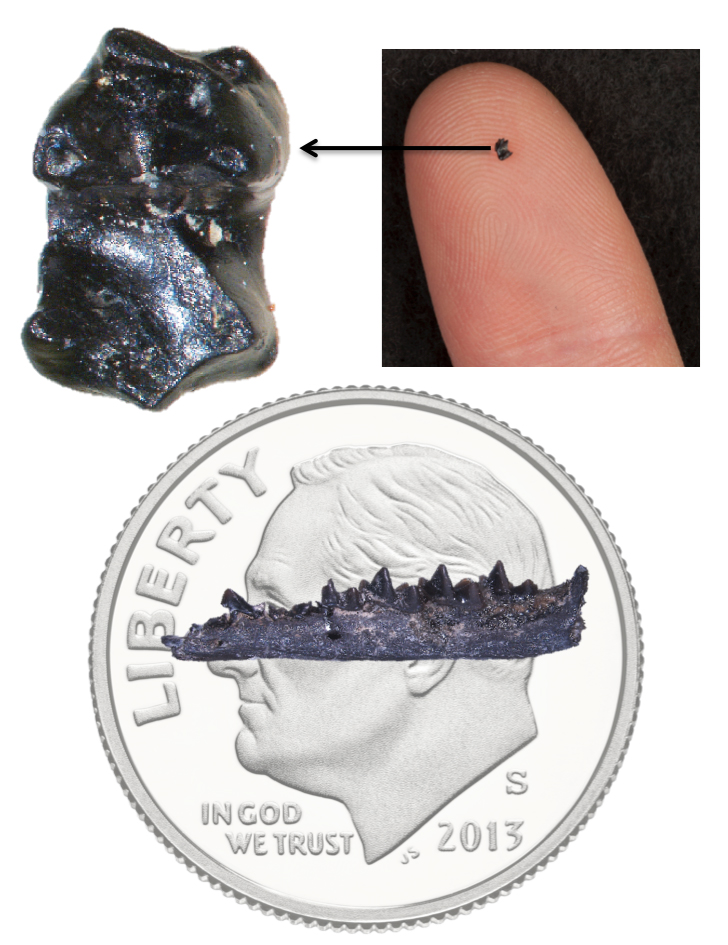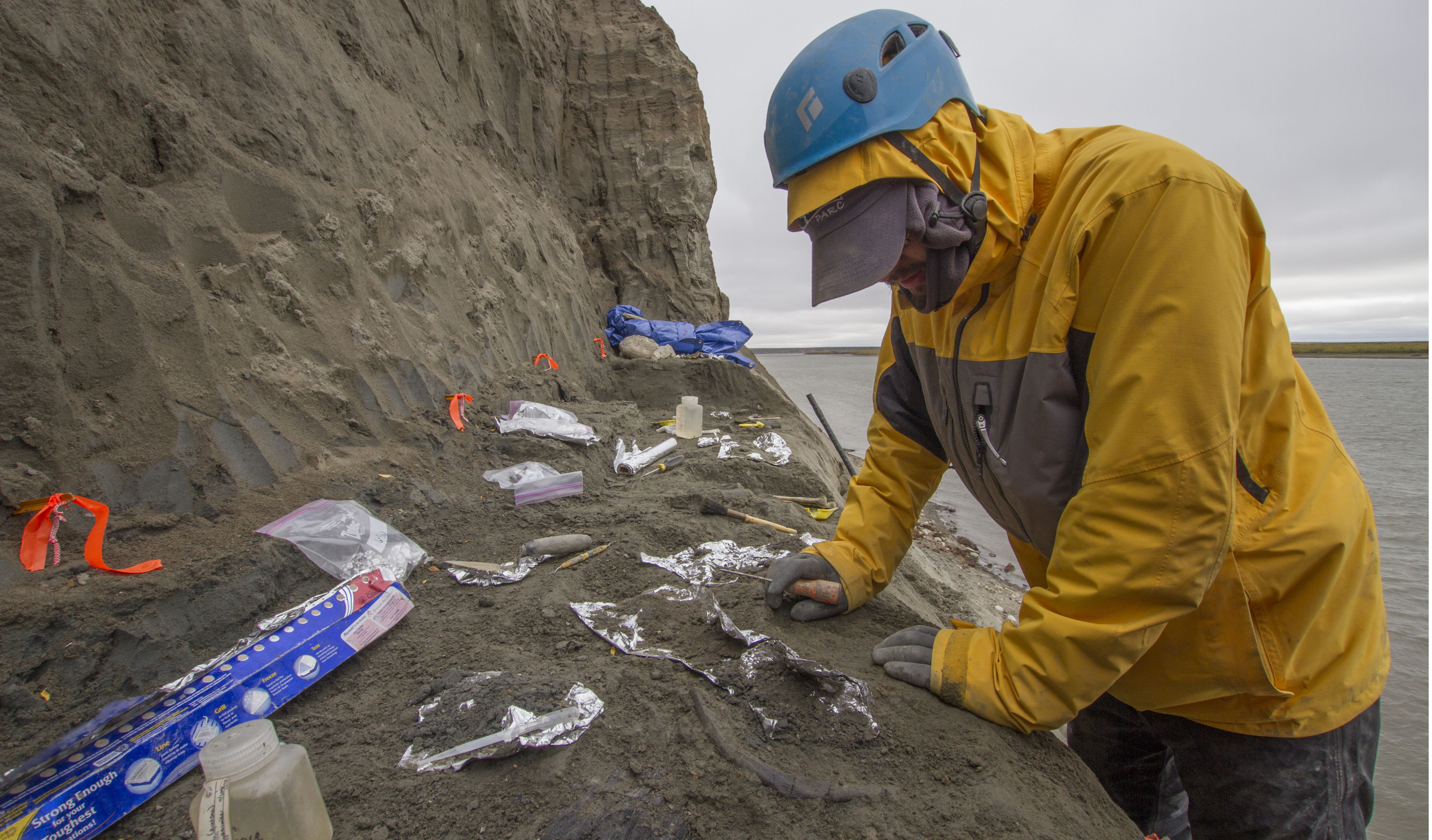Grant funds study of the Arctic's Cretaceous creatures
September 27, 2017
Theresa Bakker
907-474-6941

A team of researchers, including the curator of earth sciences at the University of Alaska Museum of the North, has received a grant from the National Science Foundation to study dinosaur and other fossil remains from Alaska’s North Slope. The $454,801 award will further research on the Cretaceous Prince Creek Formation, origin of most of the dinosaur bones in Alaska.
UAMN Curator Patrick Druckenmiller said the three-year award will support collaborators as they work to understand all members of the vertebrate community living in the paleo-Arctic during the late Cretaceous Period, including dinosaurs, fish, mammals and other newly discovered fossils.
“We want to reconstruct a more comprehensive picture of a 69 million-year-old Arctic ecosystem,” he said.
The project funds three more seasons of field work along the Colville River to unearth new fossils. In addition to finding, preparing and describing new species, the team will compare the specimens with those found at lower latitudes in deposits of similar age, particularly in Alberta and Montana.
Druckenmiller’s co-investigators include paleontologists Greg Erickson at Florida State University and Jaelyn Eberle at the University of Colorado Boulder, and geochemist Julio Sepulveda at CU Boulder. The team will also include collaborators who specialize in the study of different dinosaur groups.

One of the primary questions the researchers will address is how extreme Arctic climates affected the survival strategies of dinosaurs and other animals. They will use bone histology, or microscopic structure, to understand how growth rates compared with similar species living at lower latitudes.
In order to understand the environmental conditions that dinosaurs and other animals endured during this time period, the team will use organic geochemical techniques to provide temperature estimates.
The scientists are interested in what these latitudinal and histological comparisons suggest about the ability of dinosaurs to overwinter, hibernate or migrate in order to survive in highly variable seasonal polar conditions. Comparing the different types of Alaska dinosaurs, fish and mammals with those from lower latitudes will help determine if they are unique to the Arctic. So far, all dinosaur and mammal species described in this fossil bed are unique to Alaska.

The museum has been actively collecting dinosaur fossils along the Colville River since they were first documented in the late 1980s. Curator Druckenmiller has continued this work and led field crews to the Colville nearly every summer since 2009. In that time, the UA Museum of the North has amassed the largest polar dinosaur collection in the world.
“We currently have about 12,000 fossil specimens from this unit, about half of which have been found in the last eight years,” Druckenmiller said. “This work recently led to the naming of a new species of duck-billed dinosaur called Ugrunaaluk kuukpikensis or ‘ancient chewer of the Colville River.’ This work will continue to highlight the museum as a leader in Arctic paleontological research.”
ADDITIONAL CONTACT: Patrick Druckenmiller, UAMN earth sciences curator, at 907-474-6954 or via email at psdruckenmiller@alaska.edu


